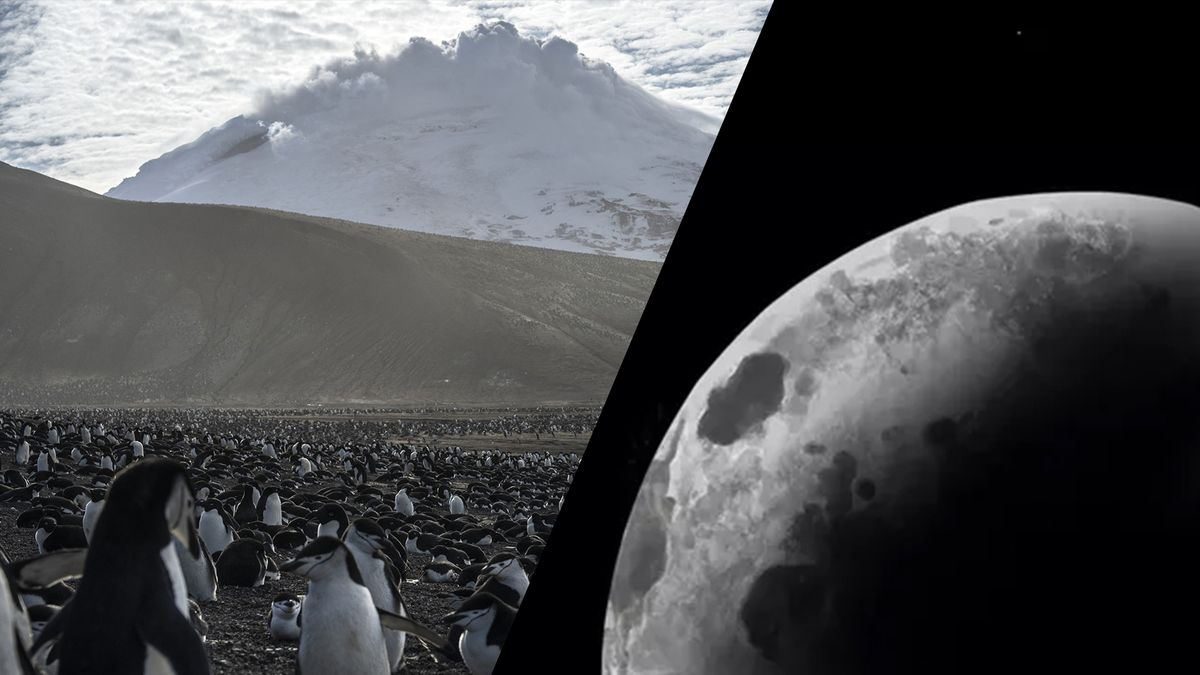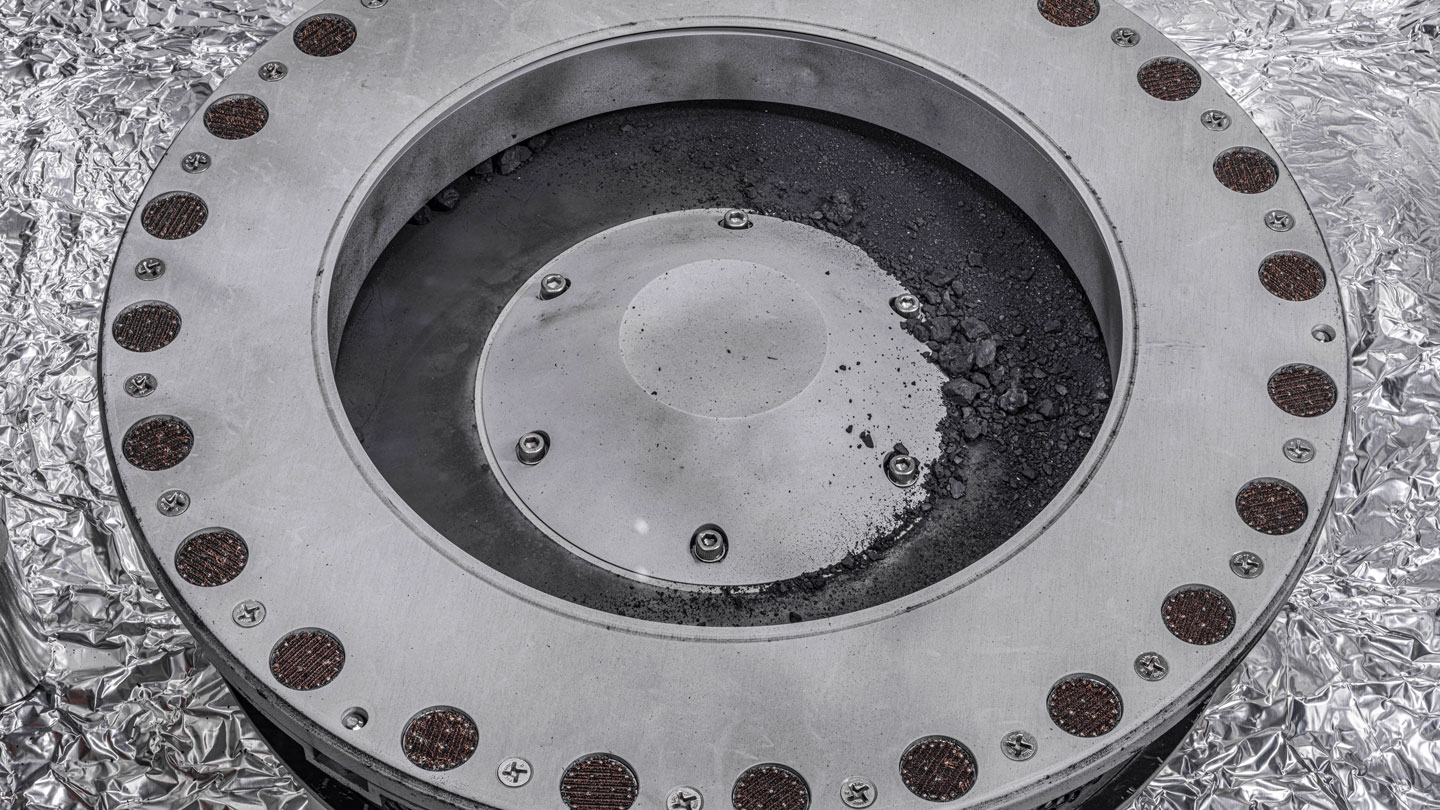Scientists Have Developed a New Kind of Ice | Sensible News
/https://tf-cmsv2-smithsonianmag-media.s3.amazonaws.com/filer_public/17/c7/17c7d439-defd-4a3c-877e-90423ac27d2d/discovery-of-new-ice-m.jpeg)
:focal(1371x1646:1372x1647)/https://tf-cmsv2-smithsonianmag-media.s3.amazonaws.com/filer_public/17/c7/17c7d439-defd-4a3c-877e-90423ac27d2d/discovery-of-new-ice-m.jpeg)
Element of the established-up for the experiment: common ice and metal balls placed in a jar
Christoph Salzmann
Scientists have established a new form of ice with a density pretty identical to that of water, according to a review revealed Thursday in Science. By shaking a jar of ice and metal balls at really chilly temperatures, the crew established a white powdery ice with distinct attributes than any kind previously recognized.
The new ice has an amorphous structure—instead of its molecules forming a neat and requested crystalline pattern, like ice you could make in your kitchen area, its molecules are disorganized, like those of liquid h2o.
“It might be liquid h2o frozen in time,” Martin Chaplin, who scientific studies drinking water structure at London South Bank University and did not add to the paper, tells Character Information’ Jonathan O’Callaghan. “It could be pretty critical.”
Due to the fact of its ubiquity on Earth, drinking water may seem like an regular fluid. But it has some abnormal attributes. For instance, as water cools, its density peaks at four degrees Celsius, and it results in being much less dense as its temperature continues to drop, which is why ice cubes float in a glass of drinking water. But that’s unusual—most liquids turn out to be more dense as they neat, per Science News’ Emily Conover.
Under normal problems, h2o molecules link in hexagonal designs as they freeze. Scientists have found 20 crystalline varieties of drinking water ice, in accordance to the New York Instances’ Kenneth Chang.
The scientists didn’t established out to make a new sort of ice. In the examine, they placed regular ice and steel balls in a jar and cooled them to minus 200 levels Celsius, shaking the container at about 20 moments for each second—just out of pure curiosity.
“It was 1 of those people Friday afternoon experiments where you just do it and see what happens,” Christoph Salzmann, a bodily chemist at College University London and co-creator of the paper, tells New Scientist’s Leah Crane. “Naively, you’d imagine very little would transpire, you’d just crack the ice down into smaller sized bits. But to our good surprise, one thing did happen.”
The research team utilised a system identified as ball milling, vigorously shaking standard ice collectively with steel balls in a jar cooled to -200 levels Centigrade. “We shook the ice like outrageous and wrecked the crystal composition,” claimed guide writer Dr Alexander Rosu-Finsen. 2/6 pic.twitter.com/4Dr2q9arKk
— UCL Information (@uclnews) February 3, 2023
A “shear force” from the metal balls turned the ice into a white powder, Salzmann tells Character Information. The staff fired X-rays at the powder to assess how its molecules were being organized. As the X-rays scattered, the researchers observed the ice experienced no structured composition at all. A laptop or computer simulation demonstrated how randomly sliding layers of ice could make the structure grow to be amorphous, for each Science Information.
Beneath extra unconventional situations, scientists have established two other varieties of amorphous ice. In the 1930s, scientists condensed drinking water vapor on a metallic surface chilled to minus 110 degrees Celsius, forming amorphous ice with a decreased density than h2o, for every a assertion. Compressing standard ice at extremely cold temperatures designed the to start with amorphous ice with a bigger density than water in the 1980s.
But the new ice is distinct: It has a density of 1.06 grams per cubic centimeter, which is very comparable to water’s 1 gram for every cubic centimeter, in accordance to Live Science’s Stephanie Pappas. The scientists connect with it medium-density amorphous ice, or MDA.
These attributes make scientists imagine MDA could be a glass period of drinking water. Glasses are made when a molten liquid cools pretty rapidly, just before its molecules can neatly organize on their own, for every Inverse’s Rahul Rao. On long timescales, glass has liquid-like qualities, according to New Scientist.
Other scientists are not certain MDA is very similar to water’s liquid type. Thomas Loerting, a actual physical chemist at the University of Innsbruck in Austria who did not lead to the paper, tells Science News he thinks the new ice is as a substitute “closely similar to extremely compact, distorted ice crystals.”
Extra exploration will be essential to far better realize how intently this ice resembles liquid h2o. The scientists feel researching it could enable us improved comprehend the moons of other planets, which might have amorphous ice on their surfaces, for each Character News.
“The massive query is, what is this things?” Salzmann suggests to New Scientist. “I’m confident that if we can determine out what this MDA is, then we will realize liquid drinking water considerably improved.”
Recommended Videos






